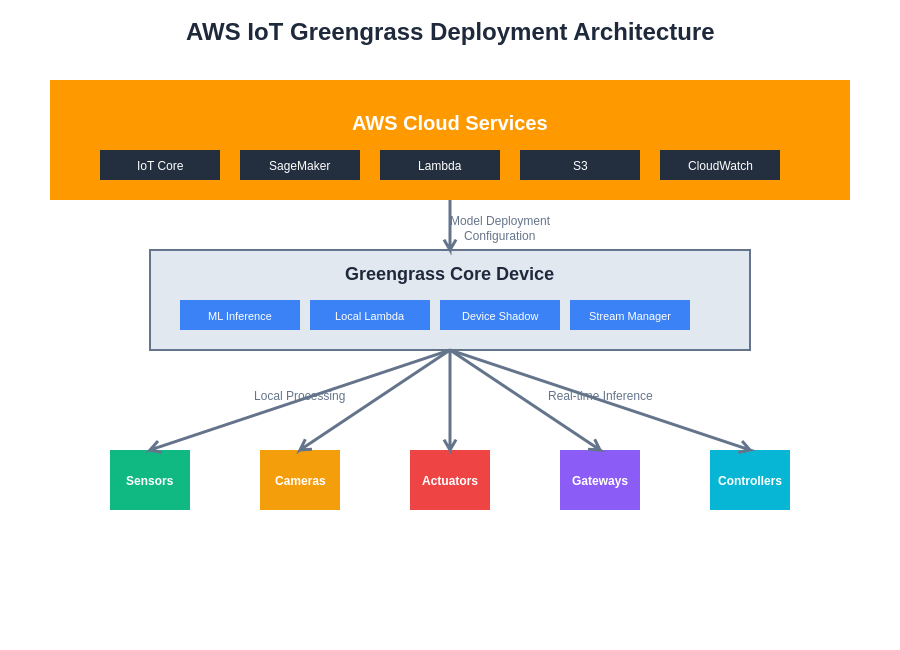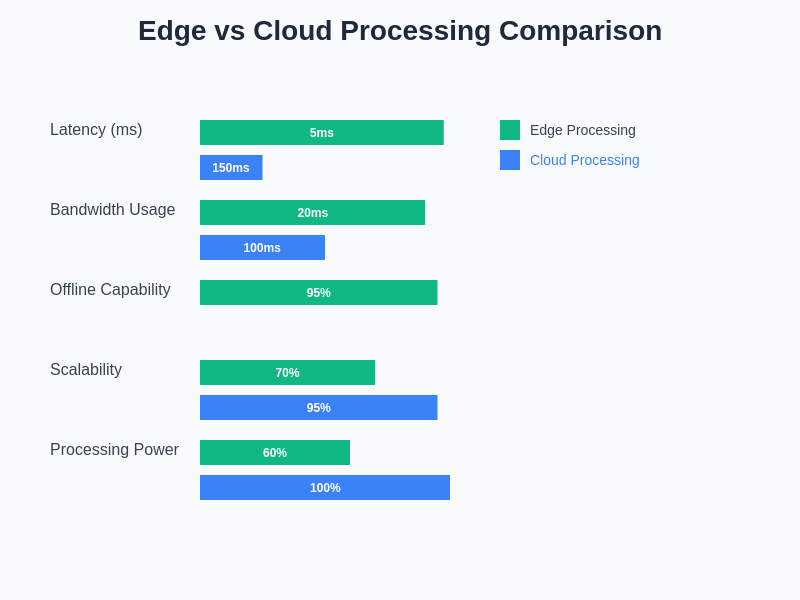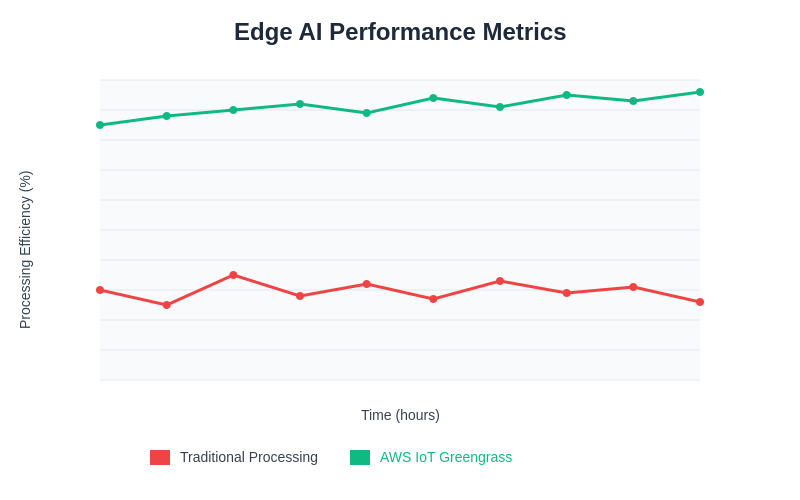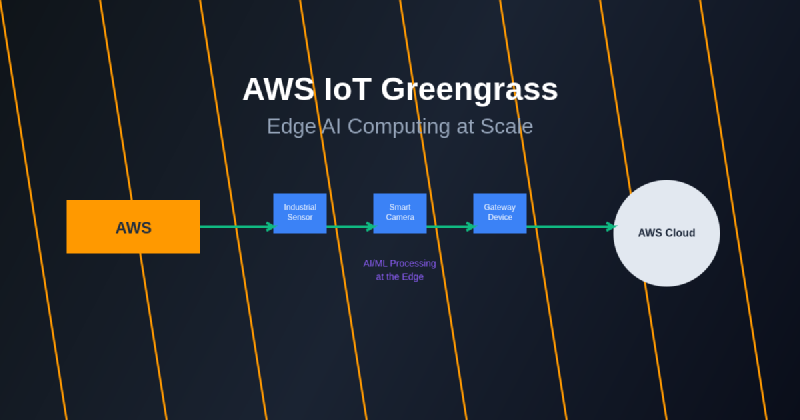The convergence of Internet of Things devices and artificial intelligence has created unprecedented opportunities for intelligent edge computing, and AWS IoT Greengrass stands at the forefront of this technological revolution. This sophisticated platform enables organizations to deploy machine learning models and AI capabilities directly to edge devices, fundamentally transforming how data is processed, analyzed, and acted upon in distributed computing environments. By bringing compute power closer to data sources, AWS IoT Greengrass addresses critical challenges of latency, bandwidth utilization, and real-time decision-making that are essential for modern IoT applications.
Explore the latest trends in AI and edge computing to understand how technologies like AWS IoT Greengrass are reshaping the landscape of distributed intelligence and real-time data processing. The emergence of edge AI computing represents a paradigm shift from centralized cloud processing to distributed intelligence that operates seamlessly across diverse hardware environments and network conditions.
Understanding AWS IoT Greengrass Architecture
AWS IoT Greengrass represents a sophisticated edge computing platform that extends AWS cloud capabilities to local devices, enabling them to collect, process, and analyze data closer to the source while maintaining seamless connectivity to the broader AWS ecosystem. The architecture of Greengrass is built around the concept of Greengrass Core devices, which serve as local compute hubs that can run AWS Lambda functions, maintain device shadows, and facilitate secure communication between edge devices and the cloud.
The platform’s architecture encompasses multiple layers of functionality, including device management, data processing, security, and connectivity management. At its foundation, Greengrass Core devices operate as miniaturized versions of AWS cloud services, providing local execution environments for custom code, machine learning inference, and data synchronization. This distributed architecture ensures that critical applications can continue operating even when network connectivity to the cloud is intermittent or unavailable, making it particularly valuable for industrial applications, remote monitoring systems, and mission-critical IoT deployments.
The seamless integration between edge and cloud components allows organizations to leverage the full spectrum of AWS services while maintaining the responsiveness and reliability required for edge computing scenarios. This hybrid approach combines the scalability and computational resources of the cloud with the low-latency and real-time processing capabilities of edge devices, creating a powerful platform for developing sophisticated IoT applications that can operate effectively across diverse deployment environments.

The comprehensive deployment architecture illustrates how AWS IoT Greengrass serves as the crucial bridge between cloud services and edge devices, enabling seamless data flow and processing capabilities across the entire IoT ecosystem. This distributed approach ensures optimal resource utilization while maintaining consistent connectivity and management capabilities.
Edge AI Capabilities and Machine Learning Integration
The integration of artificial intelligence and machine learning capabilities into AWS IoT Greengrass has transformed edge devices from simple data collectors into intelligent processing nodes capable of making complex decisions in real-time. Greengrass supports the deployment of pre-trained machine learning models from Amazon SageMaker, enabling edge devices to perform inference operations without requiring constant connectivity to cloud-based AI services. This capability is particularly valuable for applications requiring immediate responses to changing conditions, such as autonomous vehicles, industrial automation systems, and smart city infrastructure.
The platform supports multiple machine learning frameworks, including TensorFlow, PyTorch, and Apache MXNet, providing flexibility for organizations to deploy models created using their preferred development tools and methodologies. Greengrass ML Inference component simplifies the process of deploying and managing machine learning models on edge devices, handling model lifecycle management, versioning, and performance optimization automatically. This abstraction allows developers to focus on application logic rather than the complexities of edge deployment and management.
Experience advanced AI capabilities with Claude for developing and optimizing machine learning models that can be effectively deployed to edge environments through AWS IoT Greengrass. The synergy between cloud-based model development and edge deployment creates opportunities for iterative improvement and real-time optimization of AI applications across distributed device networks.
The real-time inference capabilities of Greengrass enable applications to process sensor data, images, video streams, and other inputs locally, generating immediate responses without the latency associated with cloud-based processing. This local processing capability is essential for applications such as quality control in manufacturing, real-time anomaly detection, predictive maintenance, and autonomous decision-making systems where millisecond response times can be critical for operational success.
Scalable Deployment and Device Management
AWS IoT Greengrass provides comprehensive tools and frameworks for managing large-scale deployments of edge computing infrastructure, addressing the unique challenges associated with distributed device management and software deployment. The platform’s fleet management capabilities enable organizations to deploy, update, and monitor thousands of edge devices simultaneously, ensuring consistent configuration and software versions across diverse geographic locations and operational environments.
The deployment architecture of Greengrass utilizes a component-based approach that allows for modular application development and deployment. Components can be independently versioned, updated, and deployed, enabling organizations to implement continuous integration and deployment practices for edge applications. This modularity also facilitates the development of reusable components that can be shared across different device types and application scenarios, reducing development time and ensuring consistency across deployments.
Device grouping and hierarchical management structures within Greengrass enable organizations to implement sophisticated deployment strategies that account for different device capabilities, network conditions, and operational requirements. Groups can be configured with specific policies, configurations, and software deployments, allowing for fine-grained control over how different device populations are managed and updated. This flexibility is particularly valuable for organizations operating diverse device fleets across multiple locations and use cases.
The platform’s over-the-air update capabilities ensure that edge devices can receive software updates, security patches, and new functionality without requiring physical access or manual intervention. This remote management capability is essential for maintaining large-scale deployments and ensuring that edge devices remain secure and up-to-date with the latest features and security enhancements.
Security and Compliance Framework
Security represents a fundamental consideration in edge computing deployments, and AWS IoT Greengrass provides a comprehensive security framework designed to protect devices, data, and communications across distributed edge environments. The platform implements multiple layers of security, including device authentication, encrypted communication channels, secure code execution environments, and comprehensive access control mechanisms that ensure only authorized entities can interact with edge devices and their data.
Device identity and authentication are managed through AWS IoT Core’s certificate-based authentication system, which provides unique digital identities for each device and ensures secure communication between edge devices and cloud services. These certificates are used to establish encrypted communication channels that protect data in transit and prevent unauthorized access to device communications. The integration with AWS Identity and Access Management enables organizations to implement sophisticated access control policies that govern how different users and services can interact with edge devices and their data.
The secure execution environment provided by Greengrass ensures that applications and machine learning models running on edge devices are isolated from potential security threats and cannot interfere with critical system functions. This isolation is achieved through containerization and sandboxing technologies that prevent malicious code from accessing sensitive system resources or compromising device integrity. Regular security updates and patches are automatically distributed through the platform’s update mechanisms, ensuring that devices remain protected against emerging security threats.
Compliance with industry standards and regulations is facilitated through comprehensive logging, auditing, and monitoring capabilities that provide detailed records of device activities, access patterns, and data processing operations. These audit trails are essential for demonstrating compliance with regulations such as GDPR, HIPAA, and industry-specific standards that govern how sensitive data must be handled and protected.
Real-Time Data Processing and Analytics
The real-time data processing capabilities of AWS IoT Greengrass enable edge devices to perform sophisticated analytics operations on streaming data without requiring cloud connectivity, significantly reducing latency and bandwidth requirements while enabling immediate responses to changing conditions. The platform supports various data processing patterns, including stream processing, batch processing, and complex event processing, providing flexibility for different application requirements and use cases.
Local data processing reduces the amount of data that must be transmitted to the cloud, resulting in significant cost savings for organizations dealing with high-volume data streams from sensors, cameras, and other IoT devices. By processing data locally and sending only relevant insights or aggregated information to the cloud, organizations can optimize their bandwidth utilization and reduce cloud storage and processing costs while maintaining the ability to perform comprehensive analytics on their data.

The comparative analysis demonstrates the substantial advantages of edge processing over traditional cloud-only approaches, particularly in terms of latency reduction, bandwidth optimization, and offline operational capabilities. These performance characteristics make edge computing essential for time-sensitive applications and environments with limited connectivity.
The integration with AWS analytics services enables seamless data flow between edge processing and cloud-based analytics platforms, allowing organizations to combine real-time edge insights with historical analysis and machine learning model training in the cloud. This hybrid approach maximizes the benefits of both edge and cloud computing, providing immediate responses to time-sensitive events while enabling long-term trend analysis and predictive modeling based on comprehensive datasets.
Leverage Perplexity’s research capabilities to explore advanced analytics techniques and methodologies that can be implemented within AWS IoT Greengrass edge computing environments. The combination of edge processing and cloud analytics creates opportunities for sophisticated data science applications that can operate effectively across distributed computing environments.
Industrial Applications and Use Cases
Manufacturing industries have embraced AWS IoT Greengrass for implementing predictive maintenance systems that monitor equipment health in real-time and predict potential failures before they occur. These systems utilize machine learning models deployed to edge devices that analyze vibration patterns, temperature fluctuations, and other operational parameters to identify anomalies that may indicate impending equipment failure. The ability to process this data locally ensures immediate alerts and responses, potentially preventing costly downtime and equipment damage.
Quality control applications in manufacturing environments benefit significantly from edge AI capabilities, where computer vision models deployed through Greengrass can inspect products in real-time, identifying defects and quality issues without the latency associated with cloud-based processing. These systems can immediately trigger corrective actions, reject defective products, or alert operators to quality issues, ensuring consistent product quality and reducing waste throughout the manufacturing process.
Smart city infrastructure represents another significant application area where AWS IoT Greengrass enables intelligent traffic management, environmental monitoring, and public safety systems. Traffic management systems can process real-time data from cameras, sensors, and other sources to optimize traffic flow, detect accidents, and respond to changing conditions without relying on cloud connectivity. Environmental monitoring systems can analyze air quality, noise levels, and other parameters locally, providing immediate alerts for hazardous conditions while contributing data to broader environmental management initiatives.
Agricultural applications leverage edge AI capabilities for precision farming, where sensors and cameras deployed throughout agricultural areas can monitor crop health, soil conditions, and weather patterns. Machine learning models running on Greengrass-enabled devices can analyze this data to optimize irrigation schedules, detect pest infestations, and predict optimal harvest times, enabling farmers to maximize yields while minimizing resource consumption and environmental impact.
Integration with AWS Ecosystem
The seamless integration of AWS IoT Greengrass with the broader AWS ecosystem provides organizations with access to a comprehensive suite of cloud services that complement edge computing capabilities. Integration with Amazon SageMaker enables organizations to develop, train, and deploy machine learning models using cloud resources while seamlessly deploying these models to edge devices for local inference. This integration streamlines the machine learning development lifecycle and ensures that edge deployments benefit from the latest advances in cloud-based AI development tools.
AWS IoT Core integration provides centralized device management, data routing, and communication capabilities that complement Greengrass edge processing. Device data processed locally can be selectively transmitted to IoT Core for storage, further analysis, or integration with other AWS services, creating a unified data pipeline that spans edge and cloud environments. This integration ensures that organizations can leverage both local processing capabilities and cloud-scale analytics without compromising on functionality or performance.
The integration with AWS storage services, including Amazon S3 and Amazon DynamoDB, enables edge devices to cache data locally while synchronizing with cloud storage when connectivity is available. This hybrid storage approach ensures data persistence and availability while optimizing bandwidth utilization and enabling offline operation during network outages. Data synchronization mechanisms handle conflicts and ensure consistency between edge and cloud data stores.
Amazon CloudWatch integration provides comprehensive monitoring and alerting capabilities for edge deployments, enabling organizations to track device performance, application metrics, and system health across distributed edge environments. These monitoring capabilities are essential for maintaining large-scale deployments and identifying issues before they impact operations or user experiences.
Performance Optimization and Resource Management
Optimizing performance in edge computing environments requires careful consideration of hardware limitations, power consumption, and processing efficiency, and AWS IoT Greengrass provides sophisticated tools and frameworks for managing these constraints effectively. The platform includes resource management capabilities that enable organizations to optimize how compute, memory, and storage resources are allocated across different applications and components running on edge devices.
Component lifecycle management ensures that applications and services running on edge devices are efficiently managed throughout their operational lifecycle, including startup, execution, and shutdown processes. This management includes automatic restart capabilities for failed components, resource cleanup after component termination, and optimization of resource allocation based on current workload demands and device capabilities.
Performance monitoring and optimization tools provide insights into how applications are utilizing system resources and identify opportunities for improvement. These tools can track CPU utilization, memory consumption, network bandwidth usage, and storage efficiency, enabling organizations to optimize their edge applications for better performance and reduced resource consumption. Automated scaling and load balancing capabilities ensure that edge devices can adapt to changing workload demands while maintaining optimal performance.
Power management features are particularly important for battery-powered edge devices, where efficient resource utilization directly impacts operational lifetime and maintenance requirements. Greengrass includes power-aware scheduling and processing capabilities that can optimize when and how computationally intensive tasks are executed to minimize power consumption while maintaining required performance levels.

The performance metrics visualization demonstrates the consistent superiority of AWS IoT Greengrass-enabled edge computing over traditional processing approaches, showing sustained improvements in processing efficiency, resource utilization, and overall system performance across various operational scenarios and workload conditions.
Connectivity and Network Management
Network connectivity management represents a critical aspect of edge computing deployments, particularly in environments where reliable internet connectivity cannot be guaranteed. AWS IoT Greengrass addresses these challenges through sophisticated connectivity management features that enable edge devices to operate effectively in various network conditions, including intermittent connectivity, low-bandwidth environments, and completely offline scenarios.
The platform’s local messaging and communication capabilities enable edge devices to communicate with each other without requiring cloud connectivity, facilitating the development of resilient applications that can continue operating during network outages. Local message routing and device discovery mechanisms ensure that applications can find and communicate with other devices in the local network, enabling collaborative processing and data sharing among edge devices.
Data synchronization mechanisms handle the complexities of maintaining consistency between edge and cloud data when connectivity is restored after outages. These mechanisms include conflict resolution strategies, delta synchronization to minimize bandwidth usage, and prioritization of critical data to ensure that the most important information is synchronized first when bandwidth is limited.
Network optimization features include compression, batching, and intelligent scheduling of data transmissions to maximize the efficiency of available bandwidth. These optimizations are particularly valuable in environments with expensive or limited connectivity, where minimizing data transmission costs and maximizing the value of each transmitted byte are critical considerations.
Future Developments and Emerging Trends
The evolution of AWS IoT Greengrass continues to incorporate emerging technologies and methodologies that enhance its capabilities for edge AI computing and distributed processing. Integration with next-generation communication technologies, including 5G networks and satellite connectivity, promises to expand the reach and capabilities of edge computing deployments while maintaining the low-latency and high-reliability characteristics that make edge processing valuable.
Advances in edge hardware capabilities, including more powerful processors, increased memory capacity, and specialized AI acceleration chips, are being incorporated into Greengrass compatibility and optimization frameworks. These hardware improvements enable more sophisticated machine learning models and complex applications to run effectively on edge devices, expanding the range of use cases and applications that can benefit from edge AI computing.
The integration of federated learning capabilities enables edge devices to participate in collaborative machine learning training processes without transmitting raw data to centralized locations. This approach preserves data privacy while enabling continuous improvement of machine learning models based on real-world operational data from distributed edge environments. Federated learning represents a significant advancement in how AI models can be developed and improved while respecting privacy constraints and minimizing data transmission requirements.
Container and microservices technologies continue to evolve within the Greengrass ecosystem, providing increasingly sophisticated deployment and management capabilities for edge applications. These technologies enable more flexible and scalable application architectures that can adapt to different hardware capabilities and deployment requirements while maintaining consistency and reliability across diverse edge environments.
The democratization of edge AI development through improved tools, frameworks, and abstractions is making edge computing accessible to a broader range of organizations and developers. Simplified deployment processes, automated optimization capabilities, and comprehensive development tools are reducing the barriers to entry for edge AI applications while maintaining the sophisticated capabilities required for enterprise-scale deployments.
Disclaimer
This article is for informational purposes only and does not constitute professional advice. The information presented is based on current understanding of AWS IoT Greengrass capabilities and edge computing technologies as of the publication date. Readers should consult official AWS documentation and conduct their own evaluation when considering AWS IoT Greengrass for specific use cases. Performance characteristics, pricing, and feature availability may vary based on specific deployment requirements and AWS service configurations. Organizations should thoroughly test and validate edge computing solutions in their specific environments before production deployment.
